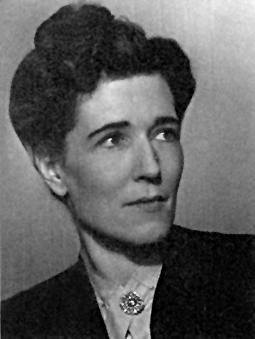
Georgette Heyer was an English novelist and short-story writer, in both the Regency romance and detective fiction genres. Her writing career began in 1921, when she turned a story conceived for her ailing younger brother into the novel The Black Moth. In 1925 Heyer married George Ronald Rougier, a mining engineer. The couple spent several years living in Tanganyika Territory and Macedonia before returning to England in 1929. After her novel These Old Shades became popular despite its release during the General Strike, Heyer determined that publicity was not necessary for good sales. For the rest of her life she refused to grant interviews, telling a friend: "My private life concerns no one but myself and my family."

These Old Shades is a 1926 historical romance written by British novelist Georgette Heyer. The novel is set around 1755: Heyer refers to the Duke of Avon's participation in the 1745 uprising as ten years previous; in addition the Prince of Condé is said to be about 20 years old. However, she also refers to Madame de Pompadour as actively involved with Louis XV, whereas her relationship with the King ended at about 1750.

Regency Buck is a novel written by Georgette Heyer. It has three distinctions: it is the first of her novels to deal with the Regency period; it is one of only a few to combine both genres for which she was noted, the Regency romance and the mystery novel; and it is the only one of her Regency stories to feature Beau Brummell as an actual character, rather than as someone merely mentioned in passing. The story is set in 1811–1812.

Friday's Child is a novel written by Georgette Heyer in 1944. It is generally considered one of Miss Heyer's best Regency romances, and was reportedly the favourite of the author herself. Heyer retained only a single fan letter, which was from a Romanian political prisoner who kept herself and her fellow prisoners sane for twelve years by telling and retelling the plot of Friday's Child.
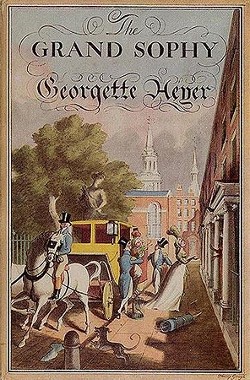
The Grand Sophy is a Regency romance novel by Georgette Heyer. It was first published in 1950 by Heinemann in the UK and Putnam in the U.S. Sales were brisk. Heinemann reported that in Australia it sold forty thousand copies in its first five months. There was also a Book Club edition in 1951.

The Foundling is a Regency romance novel written by Georgette Heyer and published by William Heinemann Ltd in 1948. It was also serialised in the Woman's Journal as "His Grace, the Duke of Sale", followed by a Book Club edition in 1949.
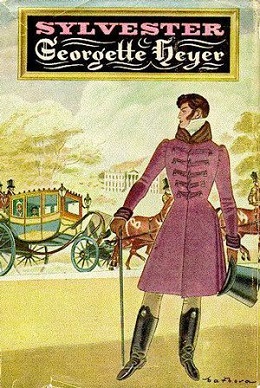
Sylvester, or the Wicked Uncle is a Regency romance novel by Georgette Heyer. First published by Heinemann, London and Putnam, New York in 1957, it is the story of intelligent and desperate Phoebe who ends up marrying the man she has run away from home to avoid, and whom she has caricatured as the villain in her novel. The book features gentle mockery of the Gothic novel genre and also features Heyer's characteristic strong heroine, with a desire for independence, who marries on her own terms. The story is set in 1817-1818.

Beauvallet is an adventure novel by Georgette Heyer, published in the UK in 1929 by Heinemann and by Longmans, Green & Co. in 1930 in the US.

Cotillion is Georgette Heyer's twelfth regency romance, published in the UK in January 1953 by Heinemann and in the U.S. in February 1953 by G. P. Putnam's Sons. '

April Lady is a Regency romance by Georgette Heyer, published in 1957 by Heinemann in the UK and by Putnam in the US. Previously serialised in the Woman's Journal as “My Lady Cardross”, the new novel was Heyer’s forty-fourth book and her fifteenth Regency novel.
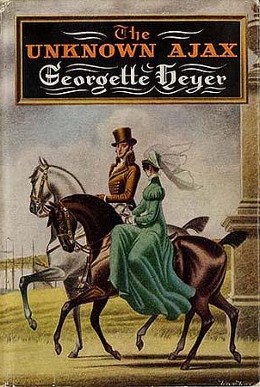
The Unknown Ajax is a Regency romance by Georgette Heyer, published in 1959 by Heinemann in the UK and in 1960 by Putnam in the US. It was her forty-seventh novel and the eighteenth set in Regency times.
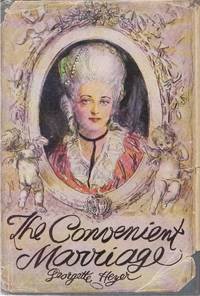
The Convenient Marriage is a Georgian romance novel by Georgette Heyer published in 1934. The novel is set in 1776 and concerns the relationship between Horatia Winwood and Lord Marcus Drelincourt. It is the first of several Heyer romances where the hero and heroine are married early in the novel, and the plot follows their path to mutual love and understanding. Later examples include Friday's Child and April Lady.

The Talisman Ring is a historical romance novel by Georgette Heyer, first published in 1936. Set in 1793, in the Georgian era, the action takes place in Sussex, where Heyer then lived.
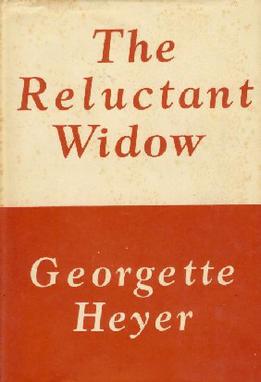
The Reluctant Widow is a 1946 Regency romance by Georgette Heyer, published by Heinemann in the UK, and by Putnam the following year in the US. A humorous parody of a Gothic novel, it is set in early 1813. It was published with the description "By midnight she is a bride, by dawn a widow", and with gouache artwork by Philip Gough.

Lady of Quality is the final Regency romance written by Georgette Heyer. Published in the UK by The Bodley Head in 1972, and by E. P. Dutton in the U. S., it was the last of her novels to be published during her lifetime.

A Civil Contract is a Regency era novel by Georgette Heyer, first published in October 1961 by Heinemann in the UK and in January 1962 by G. P. Putnam's Sons in the US. Set between 1814–1815, the story centres on a bankrupted viscount who reluctantly enters a marriage of convenience with a wealthy merchant's daughter. In this case the time is supported by a rich assortment of period detail.

Frederica is a Regency romance novel by Georgette Heyer. The story is set in 1818. The plot is typical of several later Heyer romances in counterpointing the courtships of an older and a younger couple, with variation provided by the antics of Frederica's younger brothers and their boisterous mongrel.
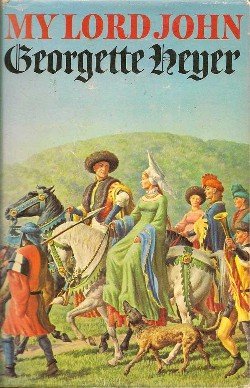
My Lord John is an unfinished historical fiction novel by the British author Georgette Heyer, published posthumously in 1975 after her death the previous year. It traces the early lives of the "young lordings" – Harry, Thomas, John, and Humfrey – all sons of the future Lancastrian king Henry IV of England. They grow up amidst turbulent events including the 1394 pestilence, the exile of their father by Richard II, the death of their powerful grandfather John of Gaunt, and the seizure of the throne by their father. John of Lancaster serves as the novel's main character.
Originally used in the context of upper class English society, ton meant the state of being fashionable, a fashionable manner or style, or something for the moment in vogue. It could also mean people of fashion, or fashionable society generally. A variant of the French bon-ton, a now-archaic expression designating good style or breeding, polite, fashionable or high society, or the fashionable world, ton's first recorded use in English was according to the Oxford English Dictionary in 1769. In British English, the word is pronounced as in French /tɒ̃/, with American English favouring the Anglicised pronunciation /tɔn/ or /tɑn/.


















